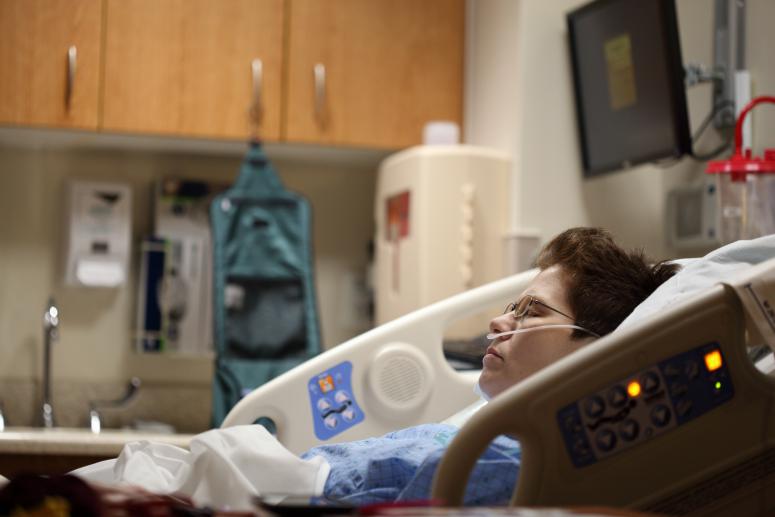
Admissions for exacerbations of chronic obstructive lung disease are common and costly. Finding ways to deliver respiratory care, such as non-invasive ventilation, safely outside of the intensive care unit (ICU) may help to lower health care costs. Although hospitals are reimbursed more for critical care services, many hospitals operate their ICUs at full capacity, making alternative care delivery models an attractive solution to alleviate capacity issues.
In a recent study published online in the February issue of Critical Care Medicine, we found no difference in in-hospital mortality or length of stay for patients treated on the general medical ward with non-invasive ventilation for exacerbations of chronic obstructive lung disease. However, we did find higher costs and rate of placement of invasive monitors (central/arterial lines) for patients treated in the ICU. Using nationally representative data from 12 states, we found a cost difference of $1,500 more per hospitalization if treated in the ICU versus the ward.

It is unclear what safety measures hospitals are currently employing to be able to treat these patients safely on the ward. Some hospitals may have dedicated respiratory floors with specially trained nurses and respiratory therapists. Others may have a safety huddle with parameters for monitoring/transfer to the ICU. Pulmonary physician consultation may be required after 24-48 hours without documented improvement on the general ward. Within the same city (Boston), I’ve worked at hospitals with policies at both extremes – hospitals that manage non-invasive ventilation on the general ward without mandatory pulmonary physician consultation and hospitals that require all patients potentially needing non-invasive ventilation to be triaged to the ICU.
In safety science, we often advocate for standardization as a way to improve outcomes and reduce waste. However, the repercussions of standardizing hospitals’ policies regarding location of delivery of non-invasive ventilation are unclear. It’s likely that each hospital has unique sets of resources during day/nighttime shifts that have been optimized to be able to deliver non-invasive ventilation safely, wherever that may be. Requiring that non-invasive ventilation be delivered outside of the ICU in hospitals that do not have the experience and respiratory expertise to care for these patients could cause unintended harm. Further qualitative analysis about individual hospital policy may be helpful to understand what resources are required for that change in policy to be safe.
Additionally, it’s unclear whether invasive monitoring done in the ICU is necessary to titrate the non-invasive ventilation parameters and deliver critical medications through central access. However, it could represent a lower threshold for intensivists to place invasive monitors if patients are triaged to the ICU. A retrospective study like this cannot parse these issues but they are certainly important issues to evaluate in order to maximize patients’ likelihood of survival without exposing them to potential harms of invasive procedures.